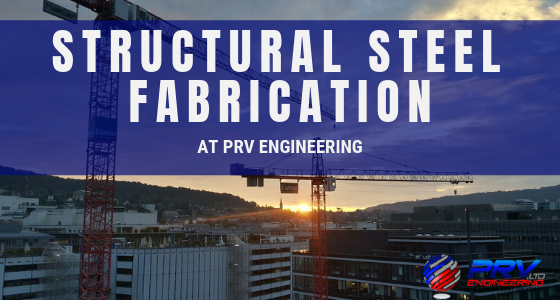Structural steel fabrication is the process of transforming raw steel into structures, products or components that can be used in construction or other industrial applications. Structural steel fabricators create a variety of steel beams, girders, decks and columns, among other things, that are used in a wide range of construction projects. So, if you are looking to get involved in the construction industry or just want to know more about steel beam fabrication, then this article is for you.
Although the construction of steel buildings dates back to the 20th century, it wasn’t until World War II that it became common practice. After the war ended, steel buildings expanded significantly as steel became more readily available. Today, companies like PRV Engineering benefit from modern technology, state-of-the-art machinery and computer-aided design software that have taken steel fabrication to the next level.
Steel construction is becoming increasingly popular all over the world with many of the top architectural wonders consisting of steel, whether it’s structural, carbon or rebar. Many industries rely on steel products and structural steel fabrication services as its more eco-friendly and offers faster construction, among many other benefits.
In the construction world, steel is commonly used for structural support in buildings, bridges and other large-scale projects. These designs are often complex and demanding as they require the highest integrity and capable of withstanding all sorts of conditions. In this article, you’ll learn more about what structural steel fabrication is and why it’s imperative to choose the right engineering company.
Developing ultra-high-strength alloys is a challenging task as it often ends up exposing weaknesses in other areas. Creating super steel requires a fine balance between all the different properties and a breakthrough has emerged, defying convention.
The construction industry has evolved significantly with many new and improved methods such as structural steel fabrication. This process, along with welding, is demanding and you should only consult experienced fabricators as it requires expert knowledge, skills and resources.
For a successful project, from manufacturing structural steel beams and steel balustrades to components and equipment, every good fabricator should follow a specific process. A less experienced company may not be able to perform the necessary tasks which could compromise product viability.
The construction industry has evolved significantly and with it, many new and improved methods including steel fabrication. If you think about skyscrapers, warehouses and shopping malls, almost every aspect in construction consists of structural steel. Steel framed structures are common across many construction projects including garages, residential properties and short-term temporary structures.
Steel fabrication is used to create various components and products with different qualities for different applications. Fact is, structural steelwork has been the primary choice for most builders, engineers, contractors and structural steel fabricators. Many industries rely on steel fabrication because of the quality, reliability, flexibility, cost effectiveness and sustainability that it offers.
Structural steel fabrication involves a complex process of turning steel into fabricated products for a construction project or other industrial applications. Structural steel has been a first choice in all types of construction and for quite some time. Even the smallest project incorporates steel because it offers faster construction among many other benefits.
The structural steel fabrication and welding process is demanding and you should only consult experienced fabricators. A less experienced company may not be able to properly perform the tasks at hand which means they could compromise the product viability. Welding and fabricating structural steel requires special expertise that only a few companies share, PRV Engineering is right up there.
The word “fabrication” means to make something from raw material. Steel fabrication is no different and plays an extremely important role in the world’s infrastructure and economy. Practically every aspect of our civilization benefits from some form of fabricated metal. From household appliances to vehicles and parts, our lives would be unrecognisable without carbon steel, stainless steel and aluminium.
Although the construction of steel buildings dates back to the 20th century, they became more popular during World War II. Thereafter, steel buildings expanded significantly once steel became more readily available. Modern technology, machinery and computer aided design software have pushed steel fabrication to the next level as we see it today. Steel fabrication now involves the implementation of various manufacturing processes including bending, cutting, grinding, brazing and welding.
When you think of structural steel fabrication and construction, what comes to mind first? Most construction projects consist of steel frameworks with skyscrapers, warehouses and shopping malls at the top of the list.
Many industries rely on structural steel fabrication because of the unmatched quality, reliability, flexibility, cost effectiveness and sustainability. But what happens when companies use non-compliant suppliers? Did you know that there are potentially over 7000 UK suppliers who are trading illegally?










Recent Comments